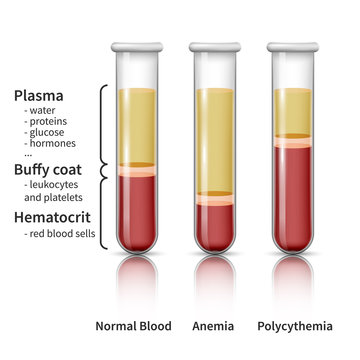Hemoconcentration of a venous blood sample is most often caused when:
The site is prepped with povidone iodine.
The tourniquet is in place for more than 2 minutes.
The specimen is not refrigerated within 30 minutes.
The needle is removed before the tourniquet.
The Correct Answer is B
Choice A Reason:
Prepping the site with povidone iodine is not typically associated with hemoconcentration. Povidone iodine is used as an antiseptic to clean the skin before venipuncture to prevent infection. While it's important to allow it to dry to avoid sample contamination, it does not cause hemoconcentration.
Choice B Reason:
Leaving the tourniquet in place for more than 2 minutes can lead to hemoconcentration. A tourniquet is applied to engorge the veins, making them easier to puncture. However, prolonged application can result in fluid being forced out of the vein into the tissue, increasing the concentration of cells and larger molecules in the blood. This can affect certain laboratory test results by artificially increasing the levels of cellular components.
Choice C Reason:
Not refrigerating the specimen within 30 minutes does not cause hemoconcentration. However, it can affect the stability of certain analytes in the blood sample. Refrigeration is necessary for preserving the integrity of certain components of the blood until analysis, but it is unrelated to the concentration of cells within the sample at the time of collection.
Choice D Reason:
Removing the needle before the tourniquet is released does not cause hemoconcentration. This action might lead to other complications, such as hematoma formation, but it does not affect the concentration of cellular elements in the collected sample.

Nursing Test Bank
Naxlex Comprehensive Predictor Exams
Related Questions
Correct Answer is D
Explanation
Choice A reason:
The Apgar score is a quick test performed on a newborn at 1 and 5 minutes after birth. The 1-minute score determines how well the baby tolerated the birthing process. The 5-minute score tells the healthcare provider how well the baby is doing outside the mother's womb. While it is an important indicator of a newborn's health, it does not directly influence the calculation of total blood volume.
Choice B reason:
Height is a measure of the length of a person's body. In the context of a 2-day-old infant, height is not a practical or necessary measurement for determining blood volume. Blood volume is more closely related to weight than to height, especially in the case of infants.
Choice C reason:
Head circumference is a measurement of the size of a child's head and is used to monitor brain growth. While it can provide valuable information about a child's development, it is not used to calculate blood volume. The total blood volume of an infant is not determined by the size of the head but rather by the overall weight.
Choice D reason:
Weight is the correct factor to consider when calculating total blood volume for a full-term, 2-day-old infant. The standard formula to estimate an infant's total blood volume is approximately 80 {mL/kg} of body weight. Therefore, knowing the infant's weight in kilograms is essential for this calculation.
Correct Answer is A
Explanation
Choice A Reason:
Occult blood detection is a test that a phlebotomist is allowed to perform according to CLIA regulations. This test is typically used to detect hidden blood in the stool, which can be an early sign of colorectal cancer or other digestive system diseases. It is considered a waived test under CLIA, meaning it is simple and carries a low risk for an incorrect result.
Choice B Reason:
Flow cytometry is a complex test that requires specialized training and equipment. It is used to analyze the physical and chemical characteristics of particles in a fluid as they pass through at least one laser. Phlebotomists are not typically trained to perform this type of analysis, as it falls under the category of high complexity testing.
Choice C Reason:
Genetic molecular tests are used to detect specific sequences in DNA or RNA that may or may not lead to disease. These tests are complex and require specialized knowledge and equipment. They are not within the scope of practice for phlebotomists, who are trained primarily in blood collection.
Choice D Reason:
Electrophoresis is a laboratory technique used to separate DNA, RNA, or protein molecules based on their size and electrical charge. This type of test is also complex and requires specialized training and equipment, which is beyond the scope of a phlebotomist's duties.
Whether you are a student looking to ace your exams or a practicing nurse seeking to enhance your expertise , our nursing education contents will empower you with the confidence and competence to make a difference in the lives of patients and become a respected leader in the healthcare field.
Visit Naxlex, invest in your future and unlock endless possibilities with our unparalleled nursing education contents today
Report Wrong Answer on the Current Question
Do you disagree with the answer? If yes, what is your expected answer? Explain.
Kindly be descriptive with the issue you are facing.
